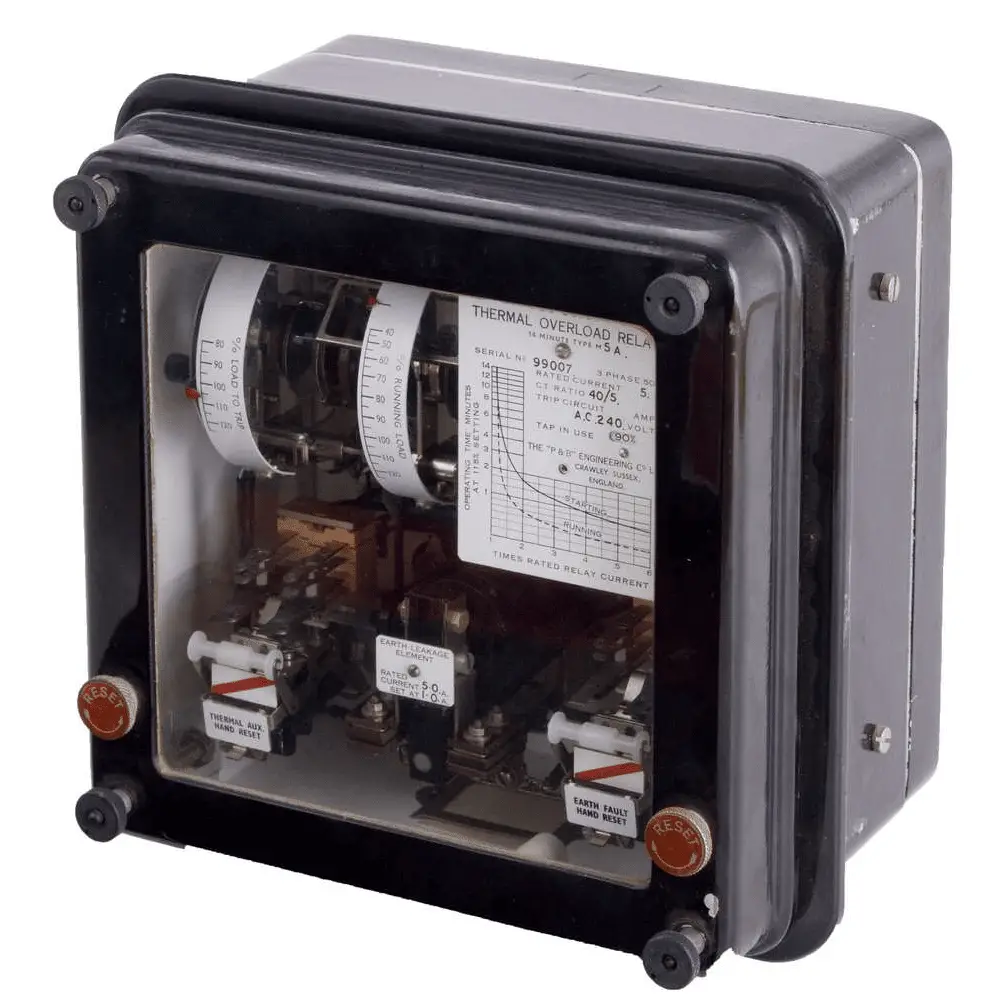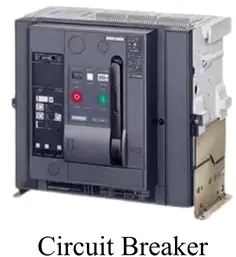The main difference between the relay and circuit breaker is that the Relays detect the fault and act as a controlling device, on the other hand, a circuit breaker acts as a switching device and opens and closes the power circuit when it receives a trip signal from the relay or open/ close command from TNC switch.
The electrical power system is vulnerable to faults, and failures of the electric supply due to overloading or short circuit issues may cause damage to electrical equipment. In order to safeguard the power appliances from getting damaged, some kind of backup protective device is necessary in order to ensure continuity of power until the main power grid is restored.
Relay and circuit breakers are two such backup devices that protect electronic equipment in industries and residential areas by the process of isolation of faulty circuits.
In this article, we will discuss the differences between relays and circuit breakers in terms of operation, construction, working principle, applications, amplification capabilities, etc.
What is a Relay?
A Relay is described as an electronic switching device that controls the course of electricity and decides which device or electronic circuit should receive electricity. Additionally, a relay also behaves as a protective device that protects the electronic equipment from damage due to overloading or short circuit issues in the circuit.
A relay is powered by a low-power current. Additionally relays also assist the circuit breakers by sensing and sending signals to them in case of a power outage in the main grid, so that the circuit breaker can cut off the circuit immediately to prevent any damage to electrical appliances.

A relay is comprised of mainly two parts – armature and control coil. The armature is the movable component of the relay that regulates the movement of the contact switches to allow or prohibit the flow of current to a circuit path. While the control coil is the stationary coil responsible for generating the electromagnetic field, that in turn induces the armature to open or close the contact switch.
There exist different kinds of relays based on the differences in construction and working such as mercury-wetted relays, machine tool relays, solid-state relays, overload protection relays, and many more.
What is a circuit breaker?
A Circuit Breaker is a protective device that protects the circuit & circuit components from damage due to major faults in the circuitry. Circuit breaker functions like a backup switch that trips on detecting faults in the electrical network. Circuit breakers are either manually or automated operated. A circuit breaker is a combination of a relay circuit that provides the fault signals to it, in order to break the circuit immediately.

A circuit breaker is comprised of contacts, a trip coil, an arc quenching medium, an outer frame, and an automatic mechanism as its components. The automatic mechanism plays a vital role in connecting and disconnecting the circuit. The trip coil ensures the proper functioning of the circuit breaker.
Circuit breakers are used for supplying power to heavy mechanical loads having high current requirements. Besides the protection of the electric circuit from electrical overloads, circuit breakers also protect the circuit from other problems such as high voltage and short-circuiting. Additionally, circuit breakers are used as switches in an electronic circuit to ensure circuit safety.
Difference Between Relay and Circuit Breaker
The following table lists the important differences between a relay and a circuit breaker –
| Parameter | Relay | Circuit Breaker |
| Definition | A Relay is a switching device that detects faults and sends a signal to the tripping coil of a circuit breaker. | A circuit breaker is also a switching device that performs automatic switching when it receives a fault signal from the relay. |
| Principle of operation | The relay operates on the principle of fault detection and triggering the circuit breaker to switch contact. | The circuit breaker operates by disconnecting the circuit by opening the contact switch on receiving the fault occurrence signal from the relay. |
| Kind of device | A relay is described as a kind of fault detection device. | A circuit breaker is described as a kind of tripping or disconnecting switching device. |
| Functionality | A relay is responsible for regulating and choosing the path where the current will flow into. | While a separate circuit breaker is utilized for each circuit path. |
| Voltage level | Relays require relatively low levels of input voltage to function. | A circuit breaker functions for a longer duration ranging between 0.02 and 0.05 seconds. |
| Functionality | A Relay identifies and interrupts the fault occurrences in an electronic circuit. | A circuit breaker is an automated switching device that doesn’t require any input voltage source to start working. |
| Amplification | A relay has the ability to amplify discrete signals. | A circuit breaker does not perform any kind of amplification of signals. |
| Curve behavior | The property curve of a Relay shows fluctuations due to aging. | The property curve of a circuit breaker almost remains constant. |
| Break down capability | The breakdown capacity of a Relay is comparatively lower. | A circuit breaker has a comparatively higher breakdown capacity. |
| Construction | The construction of a Relay is relatively simpler. | The construction of a circuit breaker is relatively complex. |
| Arc inhibition | A relay does not have the capability to destruct the formation of arcs that can result in heavy damage to the electronic components. | A circuit breaker runs several processes to eradicate the formations of circuit arcs. Thus, protecting the electronic equipment from damage during faults. |
| Applications | Relays find a diverse range of applications from home appliances, vehicles, and printers, to light control applications, earth fault detection, etc. | A circuit breaker protects heavy machinery requiring extensive current requirements. |
Conclusion
In conclusion, both relay and circuit breakers play a crucial role as switching devices that protect various electrical and electronic equipment from facing destructive damage due to short circuits and overloading issues.
They also ensure continuity of power flow to load equipment during a power outage and find several industrial and domestic applications. However, the most significant difference between them is that relays can only sense or detect faults or failures in the equipment but cannot physically make or break the power circuit connection.
However, a circuit breaker has the capability to disconnect the circuit automatically on receiving the fault signal from the relay. Overall, both the relay and circuit breaker work hand in hand in order to ensure adequate switching mechanisms when required.